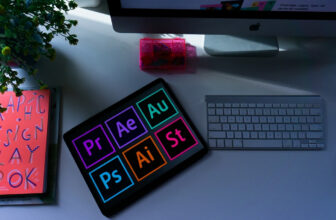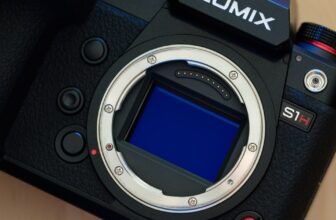
[adinserter block=”1″]
Introduction
The Leica Q3 is a premium fixed lens compact camera which pairs a 60 megapixel 35mm full-frame CMOS sensor with a image-stabilized Leica Summilux 28mm f/1.7 prime lens.
Optically the lens is comprised of 11 lenses in 9 groups (including 3 aspherical lens elements) and it has a Macro setting that enables it to focus as close as 17cms / 6.7″.
It uses the same BSI (BackSide Illuminated) CMOS sensor as the M11 rangefinder, which utilises a specially developed dual-layer UV/IR cut-off filter.
Key features of the Q3 include an expanded sensitivity range of ISO 50-100,000, the latest-generation Maestro IV image processor, 8K/30p, 4K/60p and 1080/120p video recording, a new hybrid AF system with an intelligent subject recognition system, and continuous shooting up to 15fps.
This new model for 2023 also offers extended battery life, USB-C connectivity, a 5.76m-dot OLED EVF and a tilting 1.84m-dot touchscreen LCD screen.
The recommended retail price of the Leica Q3 is £5,300 / $5,995 and it is available in black. It is designed and made in Germany.
Ease of Use
 |
The Leica Q3 has exactly the same 60 megapixel full-frame BSI (BackSide-Illuminated) CMOS sensor that was initially developed especially for the flagship M11 rangefinder camera, which offers a 21% increase on the resolution offered by 2019’s 47.3 megapixel Q2 model.
In conjunction with the brand new Maestro IV image processor, this allows the Q3 to output 14-bit raw files with a claimed dynamic range of up to 14 stops, provide an extensive ISO range of 50-100,000, and shoot 60 megapixel images at 4fps with continuous AF/AE.
It also has a special IR + UV cut filter in front of the sensor which corrects even the most oblique rays of incident light and a new colour filter array that offers more natural colour reproduction than previous Q-system cameras.
Whilst 60 megapixels will undoubtedly be a big draw for potential owners of this camera, Leica have also sensibly provided two smaller 36 and 18 megapixel modes which help avoid some of the processing and storage challenges of the the 60 megapixel mode while also boosting the burst shooting buffer times.
 |
So the Q3 can be set to record 60, 36 or 18 megapixels DNG Raw images with 14-bit color and 14-stop dynamic range using the full sensor area, something that Leica are calling “Triple Resolution Technology”.
The Leica Q3 has a fixed, as opposed to removable, lens. The 28mm focal length provided is all-encompassing and makes this camera particularly suitable for landscape and travelogue photography.
A straightforward and clearly marked macro setting on the lens barrel allows subjects as close as 17cm to be captured, while otherwise the minimum focusing distance is a regular 30cm. The manually selectable aperture range extends from f/1.7 up to f/16 with an automatic setting provided too.
This is coupled with a bright/fast f/1.7 aperture to allow for lower light shooting hand-held. As the lens is fairly wide the user is naturally prompted to get quite close to their subjects if they want them to fill the frame, or the majority of it, to really make the most of the ‘bokeh’ opportunities offered by that maximum aperture.
 |
Leica has additionally provided a screw-on/screw off lens hood, should you wish to use it as an additional aid to preventing lens flare, or avoid unwanted artifacts in brighter conditions. There’s also a thread on the front for traditional 49mm glass filters.
Incidentally, the lens and aperture provided here is exactly the same as that of the 2015 ‘Q’ and the 2019 ‘Q’ – Leica hasn’t chosen to throw the baby out of the bathwater and has retained what it says proved popular with regard to the 8-year-old original model
Impressively the lens is optically stabilized, a surprising feature given the wide-angle, full-frame nature of the lens, which coupled with the impressive noise performance at high ISOs makes it very easy to hand-hold the Q3 in less than perfect lighting conditions and still achieve pin-sharp results.
In addition to the 28mm optical focal length, the Q3 provides four different crop modes that simulate longer focal lengths.
At the press of the small unmarked button next to the rear thumbgrip on the rear of the camera, you can switch to 35mm, 50mm, 75mm and a brand new 90mm crop mode, with a rectangular overlay displayed to help with composition.
 |
The 35mm equivalent crop provides 39 megapixels resolution, the 50mm crop 19 megapixels, the 75mm crop 8 megapixels and the 95mm crop 6 megapixels.
These digital crops are only applied to the JPEG files, with a full-size 60 megapixel DNG Raw file also recorded at the same time.
As the camera is cropping into the full-size image, rather than interpolating up a la most digital zooms, there’s no degradation of the image quality, just a reduction in the megapixel count.
You could of course apply similar crops yourself during post-processing, but providing them in-camera has the main added benefit of making composition much easier and more intuitive whilst also saving on memory card space.
The 35mm and 50mm crop modes proved to be genuinely useful, effectively giving you a 28-50mm focal range that’s easy to use whilst still offering enough resolution.
 |
The 75mm and 90mm modes are harder to use due to the tiny are of the frame that’s made available for composition – the camera really needs to provide higher magnification when using these modes – and also the sub-10 megapixel resolution images that are recorded.
There is no built-in flash provided on the Leica Q3, although there is a provided hotshoe for the addition of flash, should that be required.
As you’d probably expect of a Leica camera, manual focusing on the Q3 is a veritable joy, although the means of switching between AF and MF is quite subtle and initially well hidden.
Switching to manual focus occurs via a fingernail press of the so tiny you’ll miss it lever on the lens itself, that in turn allows the lens ring to move (it’s ‘stuck’ in place in auto mode) and manual distance markings on said barrel to be selected, whereby the camera provides the user with an enlarged portion of the subject on-screen, allowing focus to be more critically determined.
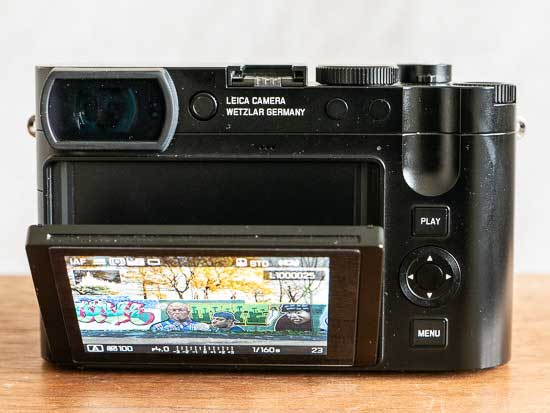 |
Auto-focusing on this new Q-series camera has taken a big leap forwards, as it now incorporates a hybrid AF system that includes phase detection as well as contrast detection pixels., providing higher speed (5x faster than the Q2) and greater precision when focusing and tracking objects.
Interestingly, it additionally employs Panasonic’s depth from defocus system to build up a depth map of the scene to further enhance the AF.
In another first for the Q-series and Leica cameras in general, the Q3 benefits greatly from the addition of intelligent subject recognition.
It’s a pretty simple system by modern standards that only recognises the eyes, faces and bodies of people plus animals, with two rather confusing options buried at the bottom of the AF Mode menu – the first option is Eye/face/Body Detection and the second is Eye/Face/Body + Animal Detection (why isn’t animal detection separate?) – but at least it’s a good start that works well in practice.
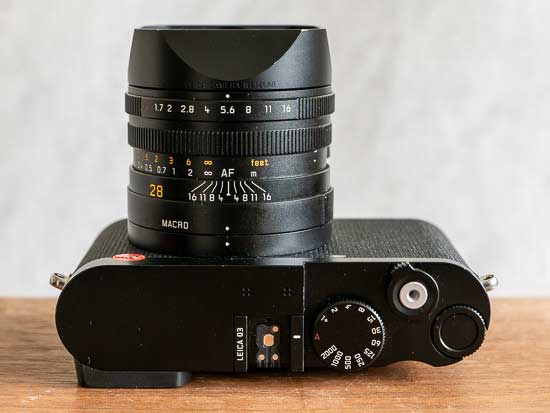 |
Leica camera have never been particularly renowned for their blistering continuous shooting rates, and the Q3 is certainly no exception to that rule.
While on paper it offers up to 15fps bursts, the reality is that the focus and exposure are locked at the first frame until you drop down to a rather more pedestrian 4fps. The buffer is at least 63 shots in RAW, though, so you can at least shoot for a long time at 4fps before that rate slows down.
Some photographers may also argue that 4fps is more than fast enough for a street camera with a 28mm lens, especially as the excellent autofocus system can be employed at the same time.
The Q3 has both a mechanical shutter that provides speeds between 120sec to 1/2000sec and an electronic shutter that runs from 1sec to 1/16000sec, with a Hybrid option also available that automatically switches between them. Flash synchronization is up to 1/200sec.
This isn’t just a camera for stills, as Leica have included 8K video recording for the first time ever on any of their models. DCI 8K recording is supported at up to 30p with 4:2:0 10-bit color when recording internally or at 8-bit when recording externally via the micro-HDMI port.
 |
If you only need 4K recording, that’s provided at up to 60p with 4:2:2 10-bit color internally or externally, while Full HD runs up to 120p for slow motion playback.
Other key video features include ProRes recording at 1080/60p, Leica’s L-log profile, and LUT compatibility. The Q3 doesn’t have a microphone socket, though, instead relying on its new USB-C port to allow an audio input.
This new port can also be used to charge the camera via a powerbank, useful for extending the battery life when out and about. Talking of which, the Q3 uses a new battery, the BP-SCL6, which has a CIPA-rated lifespan of 350 shots per charge. The Q3 is also still compatible with the BP-SCL4 battery that was used in the Q2.
The electronic viewfinder that sits in the corner of the camera has also received a significant upgrade, with the resolution being bumped up from 3.68 megapixels on the Q2 to 5.76 on the Q3. It has a 0.79x magnification and either a battery-conserving 60fps or a smooth 120fps refresh rate for more realistic motion rendering.
Another important feature that we’ve not seen before on a Leica camera is the newly tilting 3-inch LCD touchscreen. This can now be moved both upwards and downwards to suit working from a variety of shooting positions, rather than fixed in place as on the previous Q models, which makes waist-level and overhead shooting much easier.
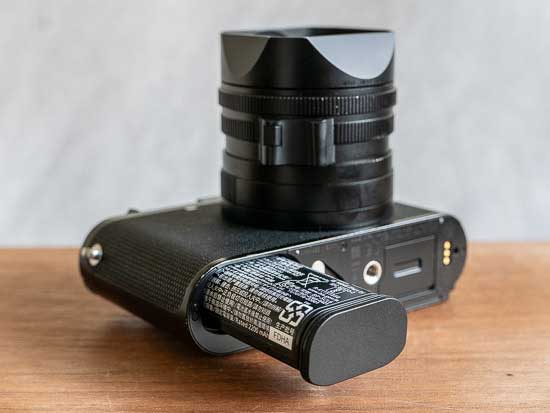 |
The resolution has also been increased significantly from 1.04M dots on the Q2 to 1.84M dots on the Q3.
The new screen does rather spoil the aesthetics of the Q3, however, as it juts out slightly from the rear of the camera, interrupting the smooth lines. Still, this is first and foremost a photographic tool, rather than an expensive ornament, so we can overlook this slight faux pas on Leica’s part.
It has also necessitated a restructuring of the controls on the rear of the camera. Instead of the vertical row of three buttons to the left of the LCD screen, as per the Q2, the Play and Menu buttons have been moved to above and below the D-pad respectively, with the customisable Function button moving alongside the Photo/Video button.
The other external change is the shutter button is now threaded to accept a mechanical cable release. Otherwise, the incoming Q3 is virtually identical to the outgoing Q2 in terms of its design and control layout, so make sure to check out our Leica Q2 review for a full run-down of how it operates.
The final major innovation on the new Q3 is the HGF-DC1 Wireless Charging Handgrip, an optional accessory that when fitted facilitates wireless battery charging via Qi-compatible charging mats, just like the Drop XL Wireless Charger that Native Union has made especially for Leica. We didn’t get to try one out, but it certainly sounds intriguing!
Image Quality
All of the sample images in this review were taken using the 60 megapixel Large setting, which produces an average image size of around 20Mb for JPEGs and 85Mb for RAW files.
The Leica Q3 recorded still images of excellent quality during the review period.
This camera produces noise-free JPEG images at ISO 50 up to ISO 3200, with some noise appearing at ISO 6400. The faster settings of ISO 12500 through to 25000 are still usable, although we’d suggest avoiding both ISO 50000 and 100000 if at all possible. The corresponding Raw files have much less obvious colour artifacts but are noticeably less sharp than their JPEG equivalents.
The night photograph was very good, with the maximum shutter speed of 60 minutes allowing you to capture enough light in every situation, and the Film Styles, although limited in number and customisability, do allow you to quickly change the look of JPEG files.
Noise
ISO sensitivity can be set between ISO 64 and ISO 100,000 in full-stop increments. Here are some 100% crops which show the noise levels for each ISO setting, with JPEG on the left and RAW on the right.
| JPEG | RAW |
|
ISO 50 |
ISO 50 |
 |
 |
|
ISO 100 |
ISO 100 |
 |
 |
|
ISO 200 |
ISO 200 |
 |
 |
|
ISO 400 |
ISO 400 |
 |
 |
|
ISO 800 |
ISO 800 |
 |
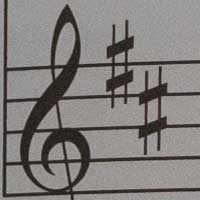 |
|
ISO 1600 |
ISO 1600 |
 |
 |
|
ISO 3200 |
ISO 3200 |
 |
 |
|
ISO 6400 |
ISO 6400 |
 |
 |
|
ISO 12500 |
ISO 12500 |
 |
 |
|
ISO 25000 |
ISO 25000 |
 |
 |
|
ISO 50000 |
ISO 50000 |
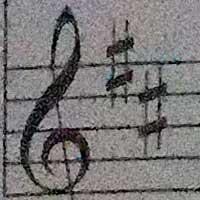 |
 |
|
ISO 100000 |
ISO 100000 |
 |
 |
Focal Range
The Leica Q3’s lens provides a focal length of 28mm in 35mm terms, as demonstrated below.

Macro
The Leica Q3 offers a Macro setting that allows you to focus on a subject that is 17cms / 6.7″ away from the camera.
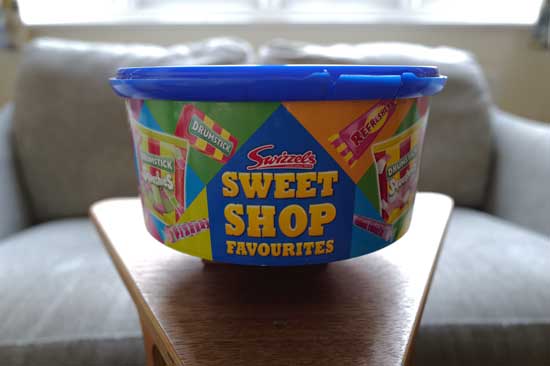
Night
The Leica Q3’s maximum shutter speed is 60 seconds in the Manual mode, which is great news if you’re seriously interested in night photography.

Intelligent Dynamic Range (iDR)
The new Intelligent Dynamic Range function allows an optimization of the darker areas in a JPEG image, with object details become much clearer. There are three different available strengths, Low, Standard and High, plus Auto and Off settings.

Off

Low

Standard

High

Auto
Film Styles
Leica’s Film Styles are preset combinations of different sharpness, contrast and saturation settings, for JPEGs only. The Leica M11’s five available Film Styles are shown below in the following series, which demonstrates the differences between them. You can also tweak the preset styles so that you can create your own particular look, although you can’t create brand new ones.

Standard

Vivid

Natural

Monochrome

Monochrome High Contrast
Sample Images
This is a selection of sample images from the Leica Q3 camera, which were all taken using the 60 megapixel Large JPEG setting. The thumbnails below link to the full-sized versions, which have not been altered in any way.
Sample RAW Images
The Leica Q3 enables users to capture RAW and JPEG format files. We’ve provided some Leica RAW (DNG) samples for you to download (thumbnail images shown below are not 100% representative).
Sample Movies & Video
This is a sample DCI 8K movie at the quality setting of 8192 x 4320 pixels at 30 frames per second. Please note that this 10 second movie is 400Mb in size.
This is a sample 8K movie at the quality setting of 7680 × 4320 pixels at 30 frames per second. Please note that this 10 second movie is 405Mb in size.
This is a sample DCI 4K movie at the quality setting of 4096 x 2160 pixels at 60 frames per second. Please note that this 10 second movie is 790Mb in size.
This is a sample 4K movie at the quality setting of 3840 x 2160 pixels at 60 frames per second. Please note that this 10 second movie is 790Mb in size.
This is a sample 1080p movie at the quality setting of 1920 x 1080 pixels at 60 frames per second. Please note that this 10 second movie is 580Mb in size.
This is a sample 1080p movie at the quality setting of 1920 x 1080 pixels at 120 frames per second. Please note that this 10 second movie is 527Mb in size.
Product Images


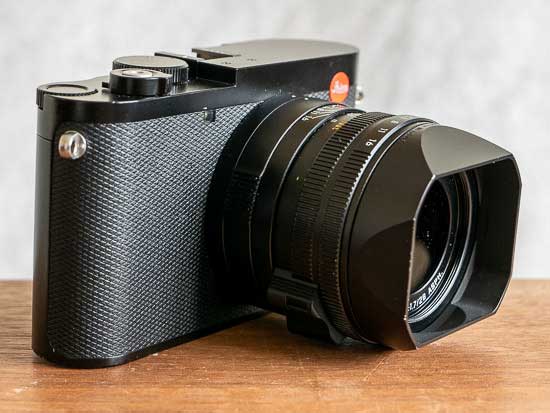





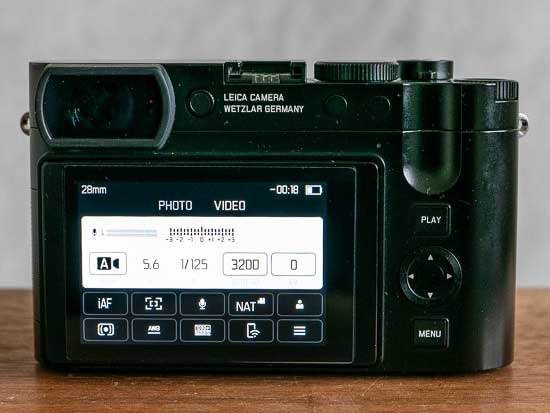









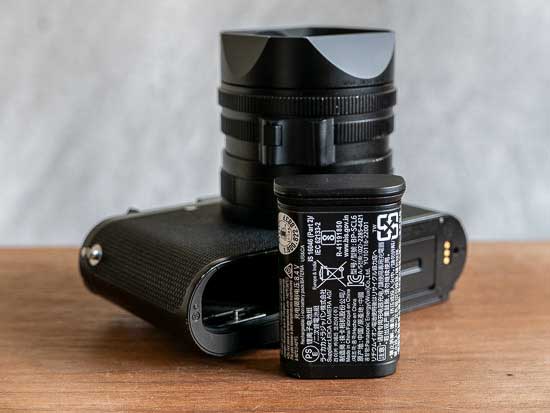
Conclusion
Leica are the last manufacturer standing when it comes to making high-end premium fixed-lens compact cameras for enthusiasts and professionals – and if that sounds like a product niche, it’s because it most certainly is – but thankfully they haven’t rested on their laurels with the new Q3 despite the lack of competition.
In true Leica fashion, this new version of the 4 year old previous model represents an evolution rather than revolution, but the additions and changes that have been made genuinely improve on what was already a very good camera.
Chief amongst these is not the 60 megapixel resolution or 8K video which will surely garner most of the headlines, rather the incorporation of the tilting LCD screen and higher-res EVF that add a lot to the cameras handling and versatility, and especially the vastly improved auto-focus system which along with the already spotless manual focusing makes the Q3 a joy to use.
Modern seamlessly meets traditional with the Leica Q3, which somehow manages to avoid being a hodge-podge of old and new ideas to create a camera that offers the best of both worlds.
Traditionalists will still find plenty to enjoy here, including the frankly frightening attention to detail and impeccable build quality, but if you’re a fan of more modern cameras who always been turned off by Leica’s approach, the Q3 is by far the most likely offering to change your mind.
That is, if you can afford the Leica price of admission, which at £5,300 / $5,995 is both significantly higher than the Q2’s launch price (£4250 / $4995) and high enough to put most users off. The best advice that we can give is probably to rent one and try it out for yourself before splashing out all that cash.
Most people will look at the price-tag, roll their eyes and instantly dismiss the Q3, but we think you owe it to yourself to at least take it for a test-drive, if only to experience the unique Leica approach to making a modern yet still traditional camera.
| Ratings (out of 5) | |
|---|---|
| Design | 4.5 |
| Features | 4.5 |
| Ease-of-use | 4.5 |
| Image quality | 4.5 |
| Value for money | 3.5 |
Main Rivals
Listed below are some of the rivals of the Leica Q3.
As its name suggests, the new X100V represents the fifth generation of Fujfilm’s now classic 35mm fixed lens premium compact camera series. The new Fuji X100V uses exactly the same 26 megapixel sensor and X-Processor 4 as the rest of the latest X-series cameras, and also adds weather-proofing, a revised lens design, tilting LCD touchscreen and 4K video recording into the rich mix. Read our in-depth Fujifilm X100V review now, complete with full-size sample images and videos…

The Leica M11 is a brand new digital rangefinder camera for 2022, offering a 60 megapixel full-frame BSI CMOS sensor, 64Gb built-in memory, longer battery life and USB-C charging. Oh, and did we mention that Leica have dropped the removable baseplate, a feature that has adorned M-series cameras for literally decades? Find out if this is the best ever fusion of old and new tech by reading our in-depth Leica M11 review, complete with full-size sample photos.

The Leica Q2 Monochrom is a 35mm full-frame compact camera with a 28mm fixed focal length lens that exclusively only shoots in black and white. With a price tag of £5000 / $6000, is this a niche product that no one will buy, or somebody’s idea of a dream camera? Find out now by reading our in-depth Leica Q2 Monochrom review, complete with full-size sample photos and videos…

The Leica Q2 is an exciting full-frame mirrorless compact camera with a 28mm fixed lens. The Q2 features a a new 47.3 megapixel sensor, 4K video mode recording at 30/24fps, high-resolution OLED viewfinder, dust and water resistance, and focusing speed of 0.15 seconds. Is this the ultimate compact camera? Find out now by reading our in-depth Leica Q2 review, complete with full-size sample photos and videos…

After almost three years since it was first unveiled, the Zeiss ZX1 full-frame mirrorless camera is finally available to buy. With a 37.4 megapixel sensor, 4K video, 35mm f/2 prime lens, 4.3-inch touchscreen, built-in Adobe Lightroom and 512Gb SSD internal memory, is the unconventional ZX1 still worth a look in 2021? Find out now by reading our in-depth review of the Zeiss ZX1 mirrorless camera, complete with full-size sample photos, test shots, videos and more…
Review Roundup
Reviews of the Leica Q3 from around the web.
Leica’s Q-series premium compacts are unique on the market, by combining a fixed prime lens with a full-frame sensor. Sony and Zeiss have previously dabbled in the same sector, with their RX1-series and ZX-1 cameras, but it seems only Leica has the cachet to sustain a genuine line. The Q3 is set to be one of the best compact cameras on the market.
Read the full review »
Announced on 25 May 2023, the Leica Q3 is the third iteration of one of Leica’s most-loved cameras. As of now, I am sure there are many specifications-focused reviews available hence this review will focus on what I deem to be the five critical improvements in the Leica Q3 over the Leica Q2 gleamed over my hands-on user experience over the last 3 days.
Read the full review »
Specifications
| Camera type | Digital 35 mm compact camera |
| Dimensions | 130 x 80,3 x 92,6 mm |
| Weight | Approx. 743 g/658 g (with/without battery) |
| Material | Full metal housing: magnesium die-cast, leather covering, protection type IP52 |
| Buffer memory | 8 GB |
| Sensor size | CMOS-Sensor, 62,39 MP/60,3 MP (total/effective) |
| Storage medium | UHS-II (recommended), UHS-I, SD/SDHC/SDXC memory card |
| Operating conditions | 0 °C to +40 °C |
| Interfaces | ISO accessory shoe with additional control contacts for Leica flash units, HDMI jack Type D, USB 3.1 Gen 2 Type C up to 10 Gbps |
| Tripod thread | A 1/4 DIN 4503 (1/4”) with stainless steel in the basen |
| Processor | Leica Maestro series (Maestro IV) |
| Filter | RGB color filter, UV/IR filter, no low-pass filter |
| File formats | Photo: DNG™ (raw data), DNG + JPG, JPG (DCF 2.0, Exif 2.31) Video: MOV |
| Image resolution | DNG™ 9520 x 6336 Pixel (60,3 MP) 7404 x 4928 Pixel (36,5 MP) 5288 x 3518 Pixel (18,6 MP) JPG |
| File size | DNG™: approx. 70 MB, depending on resolution and image content JPG: depending on resolution and image content Video: max. length: 29 min |
| Color depth | DNG™: 14 Bit JPG: 8 Bit |
| Color space | Foto: sRGB |
| Video Resolution | C8K (17:9) 8192 x 4320 8K (16:9) C4K (17:9) 4K (16:9) Full HD (16:9) |
| Video frame rate/bit rate | MOV C8K (recording to SD) 29,97 fps C8K 4:2:0 / 10 Bit h.265 L-GOP 300 Mbps 25,00 fps C8K 4:2:0 / 10 Bit h.265 L-GOP 300 Mbps 24,00 fps C8K 4:2:0 / 10 Bit h.265 L-GOP 300 Mbps 23,98 fps C8K 4:2:0 / 10 Bit h.265 L-GOP 300 Mbps MOV C8K (HDMI output without HLG/L-Log and without recording to SD) MOV C8K (HDMI output with HLG/L-Log or during recording to SD) MOV 8K (recording to SD) MOV 8K (HDMI output without HLG/L-Log and without recording to SD) MOV 8K (HDMI output with HLG/L-Log or during recording to SD) MOV C4K MOV 4K MOV FHD MOV FHD Slow Motion MOV FHD ProRes MP4 8K MP4 4K MP4 FHD |
| Lens | |
| Designation | Leica Summilux 28 f/1.7 ASPH., 11 lenses in 9 segments, 3 aspherical lens surfaces |
| Lens filter thread | E49 |
| Digital zoom | Optionally approx. 1.25x (equivalent to 35 mm), approx. 1.8x (equivalent to 50 mm), approx. 2.7x (equivalent to 75 mm), or approx. 3.2x (equivalent to 90 mm) |
| Image stabilization | Visual compensation system for photos and video recordings |
| Aperture range | F1.7 to F16 in 1/3 EV increments |
| Viewfinder/Display | |
| Viewfinder (EVF) | Resolution: 5,760,000 dots, 120 fps, magnification: 0.79x at aspect ratio: 4:3 / 0.76x at aspect ratio: 3:2, frame coverage: 100%, exit pupil position: 20.75 mm, setting range -4/+2 dpt, with eye sensor for automatic switchover between viewfinder and LCD panel, time delay 0.005 s |
| Display | 3” TFT LCD, approx. 1,843,200 dots, 384 ppi, aspect ratio 3:2, touch panel |
| Shutter | |
| Shutter type | Mechanical central shutter or optional electronic shutter |
| Shutter speeds | Mech. shutter: 120 s to 1/2000 s Electro. shutter function: 1 s to 1/16000 s Flash Synchronization: up to 1/2000 s |
| Shutter button | Two-stage (1st stage: Activation of the camera electronics including autofocus and exposure metering, 2nd stage: Taking the picture) |
| Self-timer | Delay time: 2s or 12s |
| Drive Mode | Single, Interval Shooting, Exposure Bracketing
Continuous shooting: Continuous – 7 fps / 14 bit, Continuous – 9 fps / 12 bit, Continuous – 15 fps / 12 bit: |
| Focusing | |
| Focus range | 30 cm to ∞ With macro setting: from 17 cm |
| Focus mode | Automatic or manual With manual setting: optional magnifying glass function (Auto Magnification) and edge marking (Focus Peaking) available as focus assist |
| Autofocus system | Hybrid-AF due to combination of contrast metering, depth mapping, and phase comparison metering with AF metering points in the sensor. |
| Autofocus modes | Intelligent AF (autonomously selects AFs and AFc), AFs, AFc, AF setting can be saved, optional Touch AF |
| Autofocus metering methods | Spot (can be shifted), Field (can be shifted and scaled), Multi-Field, Zone (can be shifted), Eye/Face/Body Detection, Eye/Face/Body + Animal Detection, Tracking |
| Autofocus metering fields | 315 |
| Exposure | |
| Exposure metering | TTL (exposure metering through the lens), with working aperture |
| Metering principle | Exposure metering is done by the image sensor for all exposure metering methods (in Live View mode and in rangefinder mode) |
| Exposure metering methods | Spot, Center-Weighted, Highlight-Weighted, Multi-Field |
| Exposure modes | Program AE mode (P) Aperture-priority mode (A): manual aperture setting Shutter-priority mode (S): manual shutter-speed setting Manual (M): manual setting for shutter speed and aperture Various fully automated variants (Scene Mode): AUTO, Sport, Portrait, Landscape, Night Portrait, Snow/Beach, Fireworks, Candlelight, Sunset, Digiscoping |
| Exposure compensation | ±3 EV in 1/3 EV increments |
| Automatic bracketing | 3 or 5 frames, graduations between shoots up to 3 EV, in 1/3 EV increments additional optional exposure compensation: up to ±3 EV |
| ISO sensitivity range | Photo: Auto ISO 100 bis ISO 100 000 Manual ISO 50 bis ISO 100 000 Video: |
| White balance | Automatic (Auto), default (Daylight, Cloudy, Shadow, Tungsten, Flash), manual metering (Gray card), manual color temperature settings (Color Temperature, 2000 K to 11500 K) |
| Flash | |
| Flash unit connector | Via the accessory shoe |
| Flash sync time | 1/2000 s, slower shutter speeds available, automatic changeover to TTL linear flash mode with HSS-compatible Leica system flash units if sync time is undercut |
| Flash exposure metering | Using center-weighted TTL pre-flash metering with Leica flash units (SF 26, SF 40, SF 58, SF 60, SF 64) or with system compatible flash units, remote controlled flash SF C1 |
| Flash exposure compensation | SF 40: ±2 EV in 1/2 EV increments SF 60: ±2 EV in 1/3 EV increments |
| Equipment | |
| Microphone | Stereo |
| Speaker | Mono |
| WLAN | WLAN function for connecting to the Leica FOTOS app. The Leica app is available from the Apple App Store™ or the Google Play Store™. EU/US/CN: 2,4 GHz 5 GHz Access point + client mode: JP: 5 GHz Client mode: Maximum output (e.i.r.p.): <14 dBm, encryption method: WLAN-compatible WPA™/WPA2™/WPA3™ |
| Bluetooth | Bluetooth Bluetooth 5.0 LE: Channel 0–39 (2402–2480 MHz), maximum output (e.i.r.p.): 10 dBm |
| GPS | Not available everywhere due to country-specific legislation; can be added via the Leica FOTOS app. Data is written to Exif header of the picture files. |
| Menu languages | English, German, French, Italian, Spanish, Portuguese, Russian, Japanese, Traditional Chinese, Simplified Chinese, Korean |
| Power supply | |
| Rechargeable battery (Leica BP-SCL6) |
Lithium-ion rechargeable battery, rated voltage: 7.2 V (DC); capacity: 2200 mAh (min.), 350 shots (based on CIPA standard, with All Displays Auto Off = 5 s); manufacturer: Panasonic Energy (Wuxi) Co. Ltd., Made in China |
| Charger (Leica BC-SCL4) |
Input: AC 100–240 V, 50/60 Hz, 0.25 A, automatic switchover; output: DC 8.4 V 0.85 A; manufacturer: Salom Electric (Xiamen) Co., Ltd., Made in China |
| Charging via USB | During operation: 9 V/3 A (min. 27 W) With camera switched off: 5 V/1500 mA (2.5 W or greater) |
| Wireless Charging | Optimal performance with 9 V chargers (10 W Charging Pad required) |
| Rated values for input voltage/power 7.2 V 2.3 A (battery), 5 V 3.0 A / 9 V 2.5 A (USB) |
Your Comments
[adinserter block=”1″]
Credit : Source Post



